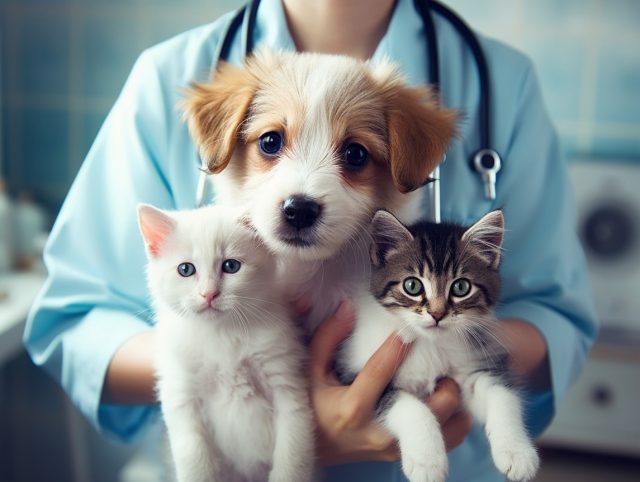Katherine Marraccini has seen the field of veterinary medicine continually evolve with new technologies and treatments emerging to enhance animal care. These advancements not only improve the quality of life for our furry friends but also often mirror or even precede developments in human medicine. In this article from Katherine Marraccini, the Dr. delves into some of the latest breakthroughs and technologies in veterinary medicine, shedding light on how they reshape animal healthcare.
1. Telemedicine and Remote Monitoring
Katherine Marraccini on Bringing Veterinary Care into the Digital Age
One of the most significant advancements in veterinary medicine is the adoption of telemedicine. This technology allows pet owners to consult with veterinarians remotely through video calls or messaging platforms. Telemedicine is particularly beneficial for routine follow-ups, minor issues, or initial consultations before deciding if an in-person visit is necessary. Additionally, remote monitoring technologies are now available, enabling veterinarians to track a pet’s vital signs and behavior from afar, ensuring timely interventions when needed.
2. Regenerative Medicine
Katherine Marraccini on Innovations in Healing and Recovery
Regenerative medicine, including stem cell therapy and platelet-rich plasma (PRP) treatments, has shown promising results in treating various conditions in animals. These therapies are used to accelerate healing in injuries such as tendon and ligament damage, and also in managing chronic diseases like osteoarthritis. By using the body’s own cells to repair and regenerate tissues, these treatments offer a cutting-edge approach to healing.
3. 3D Printing
Katherine Marraccini on Custom Solutions for Complex Problems
The field of veterinary orthopedics is undergoing a transformation thanks to advancements in 3D printing technology. With the help of 3D printing, veterinary surgeons can now create customized implants, prosthetics, and surgical models tailored to the specific anatomical requirements of animals. This level of precision ensures that the fit is much better than with traditional surgical methods, reducing the risk of complications and improving outcomes.
3D printing technology has made it possible to create intricate designs that were previously impossible to produce with traditional manufacturing techniques. This means that the implants and prosthetics created through 3D printing can be much more complex and better suited to the individual needs of the animal in question. Additionally, the use of 3D printing in surgical models allows surgeons to practice complex procedures before performing them on live animals. This reduces the risk of complications during surgery and ultimately results in a faster and more successful recovery.
In summary, the use of 3D printing in veterinary orthopedics is a game-changer. Customized implants, prosthetics, and surgical models created through 3D printing technology ensure a higher level of precision and better outcomes for animals undergoing complex surgical procedures.
4. Advanced Imaging Technologies
Katherine Marraccini on Enhanced Diagnostic Capabilities
Imaging technologies such as MRI and CT scans are now more commonly used in veterinary medicine. These advanced diagnostic tools provide detailed and precise images, allowing for more accurate diagnoses and better-informed treatment plans. Recent developments have made these technologies more accessible and affordable for veterinary practices.
5. Genetic Testing
Katherine Marraccini on Personalized Care for Pets
In recent years, genetic testing has become increasingly popular in the field of veterinary medicine. This type of testing allows veterinarians to gain insights into the genetic predispositions of animals to certain health conditions. By analyzing an animal’s DNA, veterinarians can identify any potential health risks and develop personalized preventive care plans to reduce the likelihood of these conditions developing in the future.
In addition to personalized preventive care plans, genetic testing can also be used to inform breeding decisions. By identifying genetic markers associated with hereditary diseases, breeders can make informed choices to reduce the incidence of these conditions in future generations. This is particularly important for breeds that are known to be predisposed to certain health conditions.
6. Cancer Treatments
Katherine Marraccini on New Hope in Oncology
The field of veterinary oncology is experiencing significant advancements. New chemotherapy protocols, targeted therapies, and immunotherapies are being developed and tested, offering new hope for pets diagnosed with cancer. These treatments aim to be more effective and less toxic, improving the quality of life for animals undergoing cancer treatment.
7. Wearable Technology
Katherine Marraccini on Continuous Health Monitoring
Wearable technology for pets, such as smart collars and activity trackers, is becoming increasingly popular. These devices monitor activity levels, heart rate, and other vital signs, providing continuous health data to veterinarians and pet owners. This technology aids in early detection of potential health issues and promotes proactive healthcare.
The field of veterinary medicine is at an exciting juncture with these advancements, offering enhanced care and treatment options for animals. Katherine Marraccini notes that as technology evolves, we can expect even more innovative approaches to animal healthcare. These developments not only benefit our pets but also enrich the veterinary profession, paving the way for more effective and compassionate animal care. The future of veterinary medicine is bright, with new technologies transforming how we care for our animal companions.








